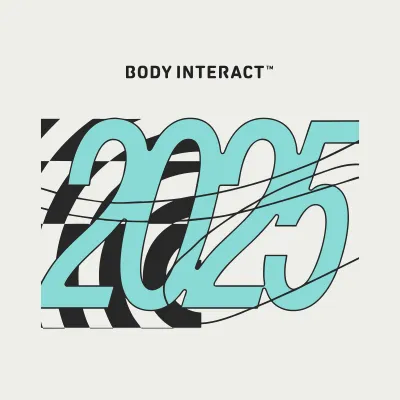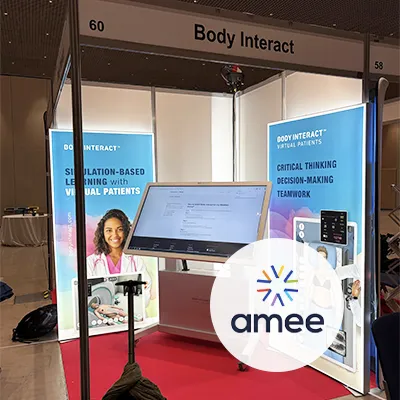Schools of healthcare professions have reinvented their teaching methodologies since the COVID-19 outbreak. Some have been able to fully operate remotely, others have found a balance between in-person class and online learning.
As discussed right in the beginning of this pandemic, it’s important to encourage educators to share their experiences during lockdown. For sure, other teachers would benefit if they understand how other institutions, educators and healthcare professionals have reinvented themselves by adopting these new digital solutions.
More than making sure everyone was able to keep their classes on going, it was essential that schools would find solutions that were able to respond to unpredicted challenges – future pandemics that would request schools to close, clinical practice that could be potentially suspended or simply the need to balance face-to-face and digital learning classes.
In order to share these valid insights, Body interact, in partnership with the Society of Simulation in Healthcare, promoted a webinar under the thematic of Distance Learning Education during and after COVID-19.
Thus, five educators were invited to share their experiences on the importance of using virtual patient simulation during the outbreak. From Georgia to Chile, all speakers brought to the webinar a different perspective, having Body Interact as the digital solution.
Take the chance to read the testimonial of Professor Roberto De Ponti from University of Insubria, Italy and Professor Eliana Escudero from Universidad Diego Portales, Chile.

Urgency, Novelty and Satisfaction
Professor Roberto De Ponti from University of Insubria, Italy, started his presentation by choosing three words to define his experience within the pandemic and the implementation of virtual patients in the university curriculum: urgency, novelty and satisfaction.
Urgency:
Due to the COVID-19 pandemic, in-hospital medical training was interrupted at the end of February 2020. One hundred students were attending the 6th year of medical schools and needed to finish their practical training before July and early September. Otherwise, they wouldn’t graduate and weren’t able to apply for the post-graduate residency programs.
Novelty:
Even though Body Interact was already in the market, students and educators, from the University of Insubria, were still not used to any kind of virtual patients’ simulator.
Nevertheless, it was time to create a plan and guarantee that students were able to keep their practice on going.
Divided in groups of 20 students, each Body Interact session started with a tutor’s presentation about the briefing of the virtual patient they would need to manage. Next, students would perform the scenario individually and come back 20 minutes after for the debriefing session.
Satisfaction:
As important as finding a strategy, it’s evaluating its implementation. Thus, students completed a 12-item questionnaire to investigate the perceived quality of this training modality.
From the structure of the seminar to the probability of recommend Body Interact to other medical universities, students positively evaluated the web access, the scenarios selection, the time given to solve each case and its realistic component.
Additionally, when asked to students’ which kind of medical training would they recommend to the next generation of learners, they concluded how important it is to complement traditional teaching methodology with a software such as Body Interact.
Together, these tools provide a complete training experience to today and tomorrow healthcare professionals.

The positive achievements of COVID-19
The second speaker of the day was Professor Eliana Escudero from Universidad Diego Portales, Chile. When looking back, and despite the severity of this pandemic situation, Professor Eliana realized that COVID-19 has also brought positive achievements to the school.
Before the outbreak, there was no simulation department at her University in Chile. However, fruit of the need to find a solution that enabled students to keep learning in a safe and controlled environment, a sim center was created and Body Interact introduced in the curriculum.
The challenges have arisen and it was necessary to start designing a plan. It was important to understand what the priorities were, how to implement Body Interact platform and how to do the necessary curriculum adjustments to adapt to this new digital learning method.
Moreover, educators needed to learn how to take advantage of the virtual patients – understanding how to present a case and how to build the debriefing session.
Guarantee the safety of the patient and the learner
From the students’ perspective, there was one interesting fact: the time dedicated to solve a virtual patient scenario. On average, they were able to spend 2 to 4 of their study in one single clinical scenario. Having a virtual environment such as Body Interact, allowed them to learn with their mistakes, and guaranteeing safety to both learners and patients.
Another conclusion found in the Universidad Diego Portales’ survey was regarding the use of the simulator: 77.9% of the students, prefer to solve together the same clinical scenario with the guidance of the educator.
Important to mention that Body Interact was used by different careers at the university: midwives, therapist and nursing. Thus, each course has used different clinical scenarios focusing on their learning objectives and training needs.
Body Interact – SSH – Part 1
Take the change to read
Body Interact – SSH Learning Lab – Part 2 with Professor Pier Ingrassia (Italy), Dr Sherria McDowell (USA) and Professor Paata Tsagareishvili (Georgia)
Did you enjoy this article? Take the chance to share it…








